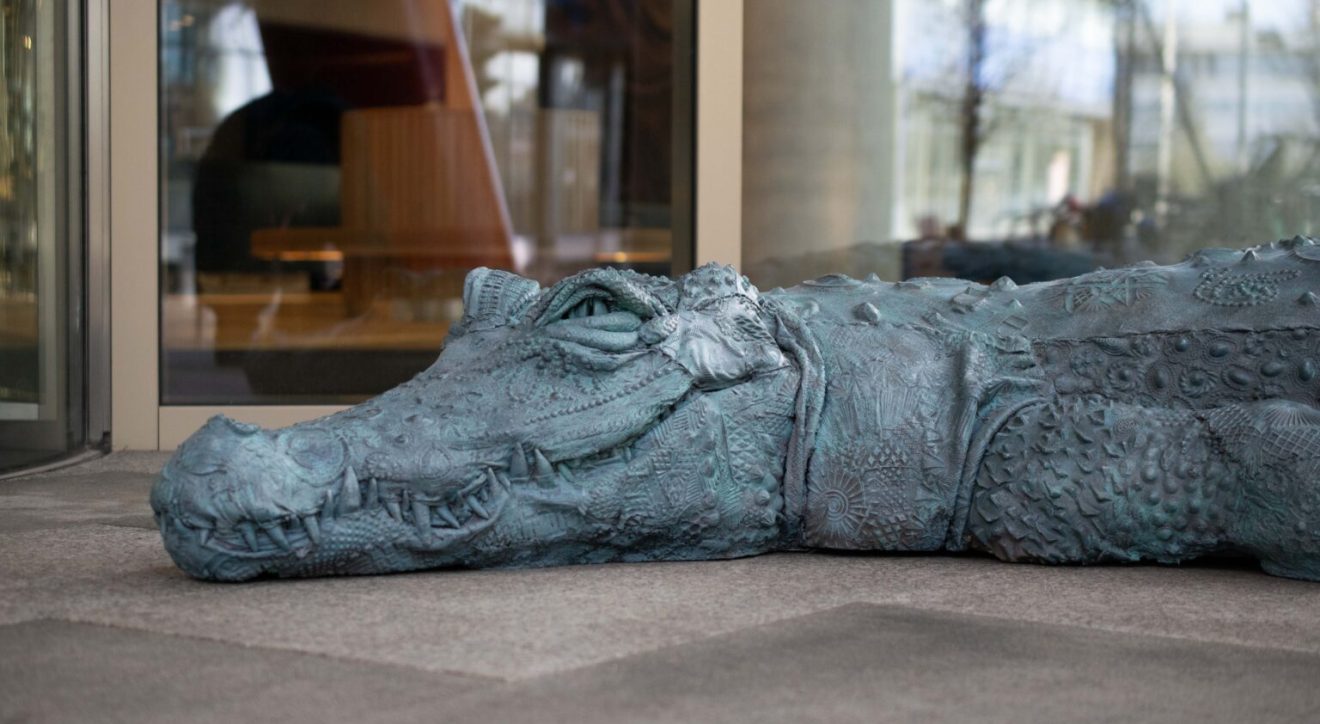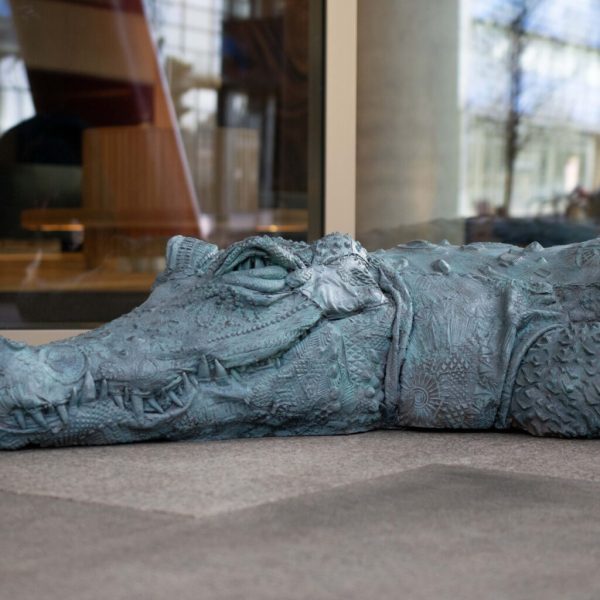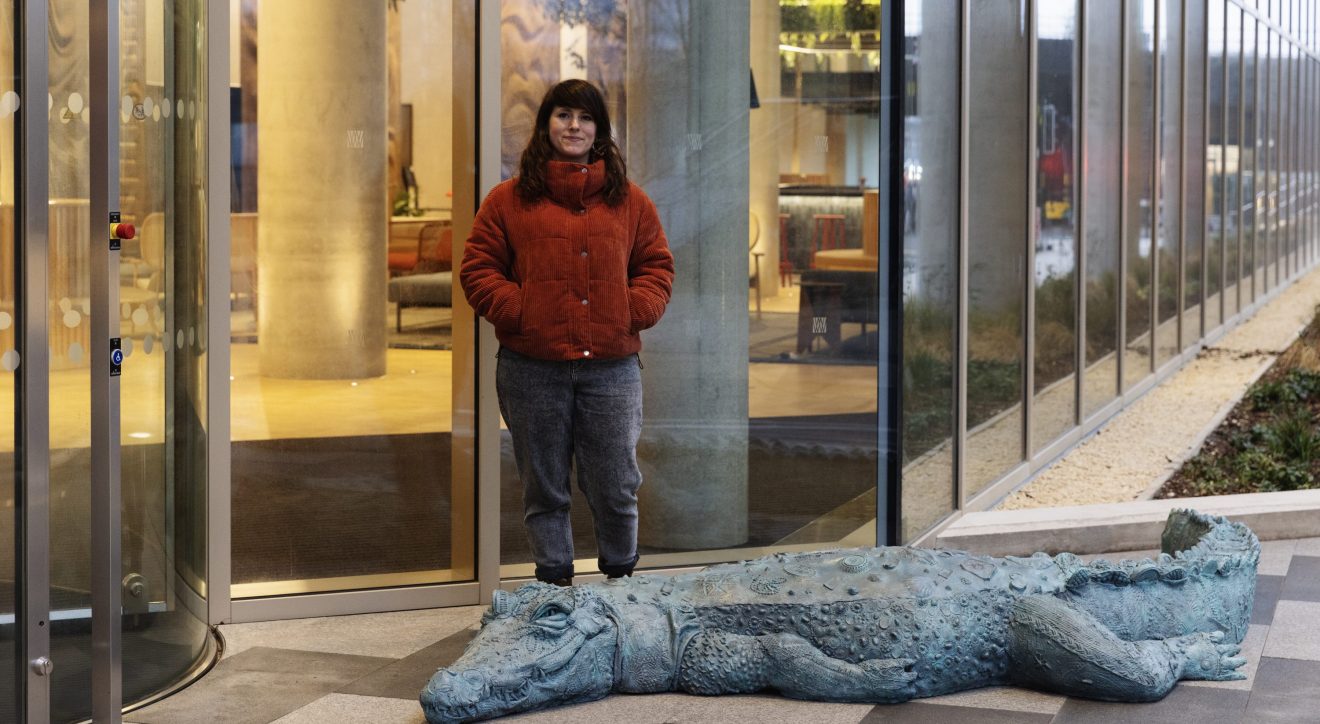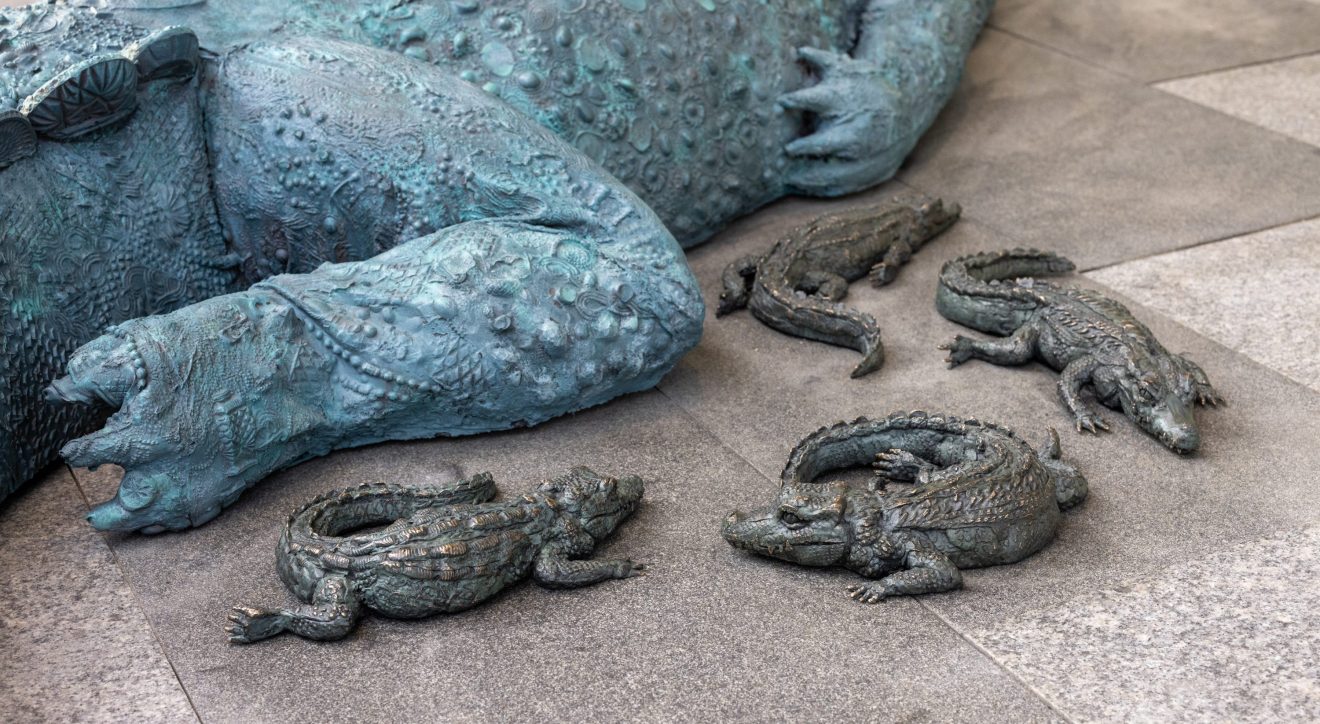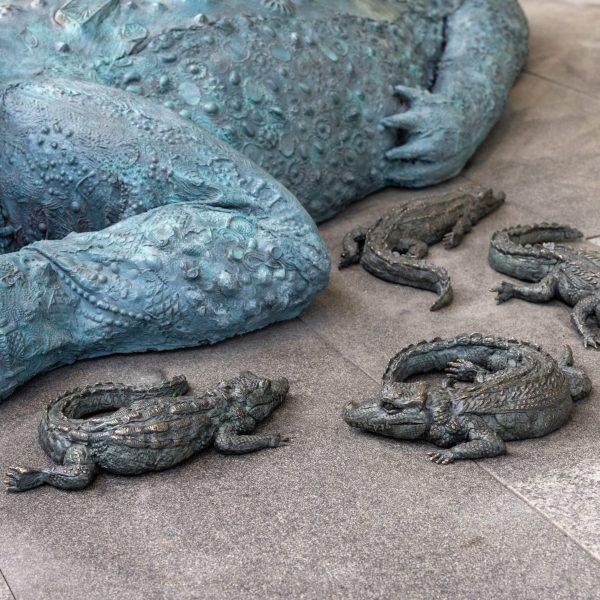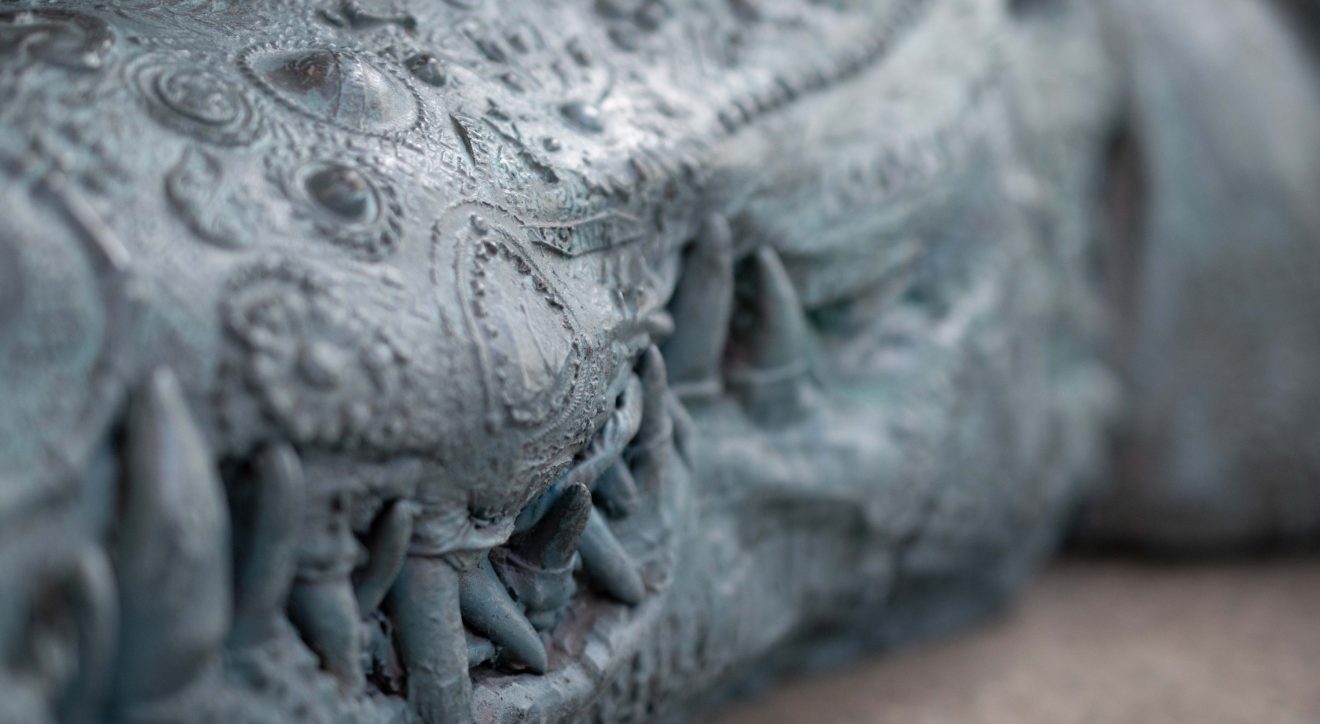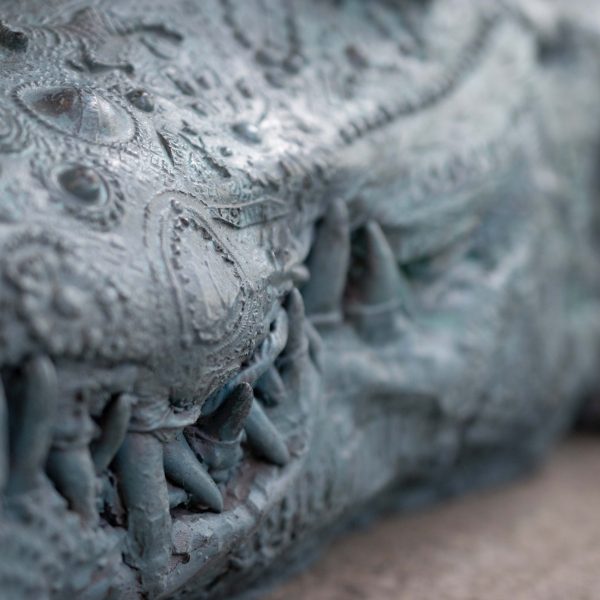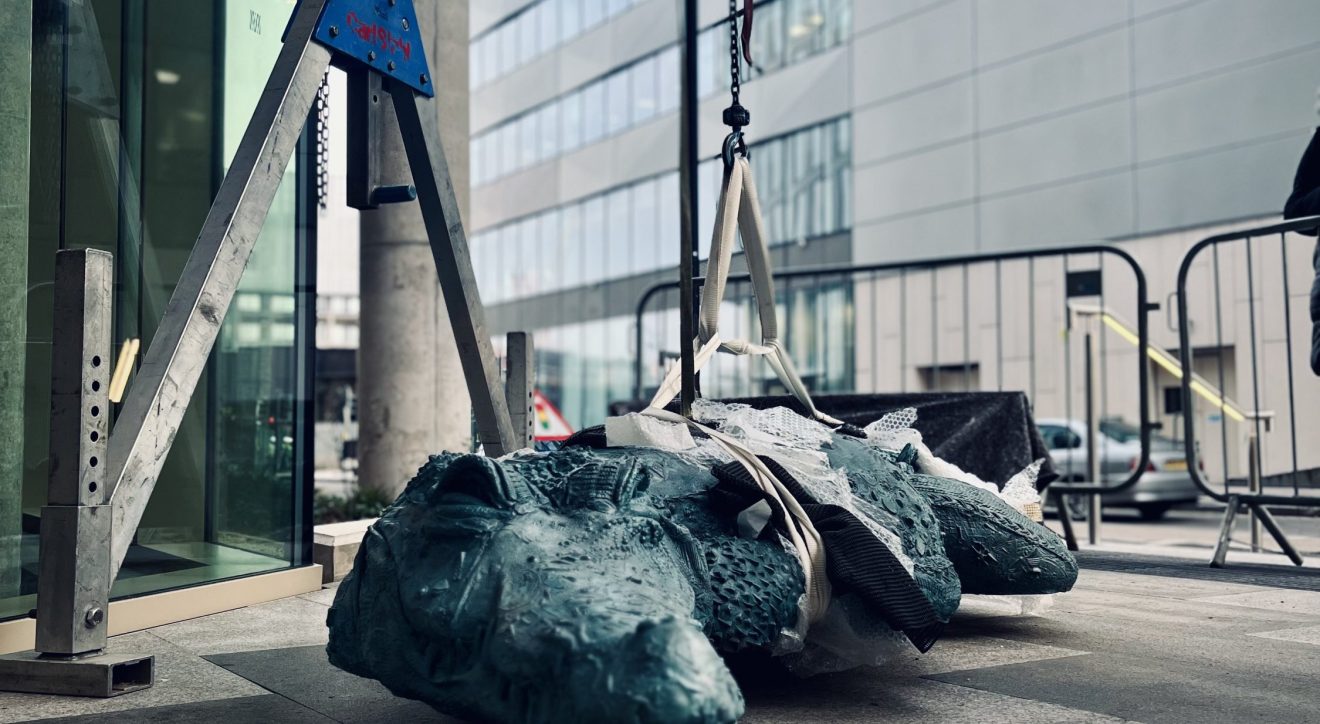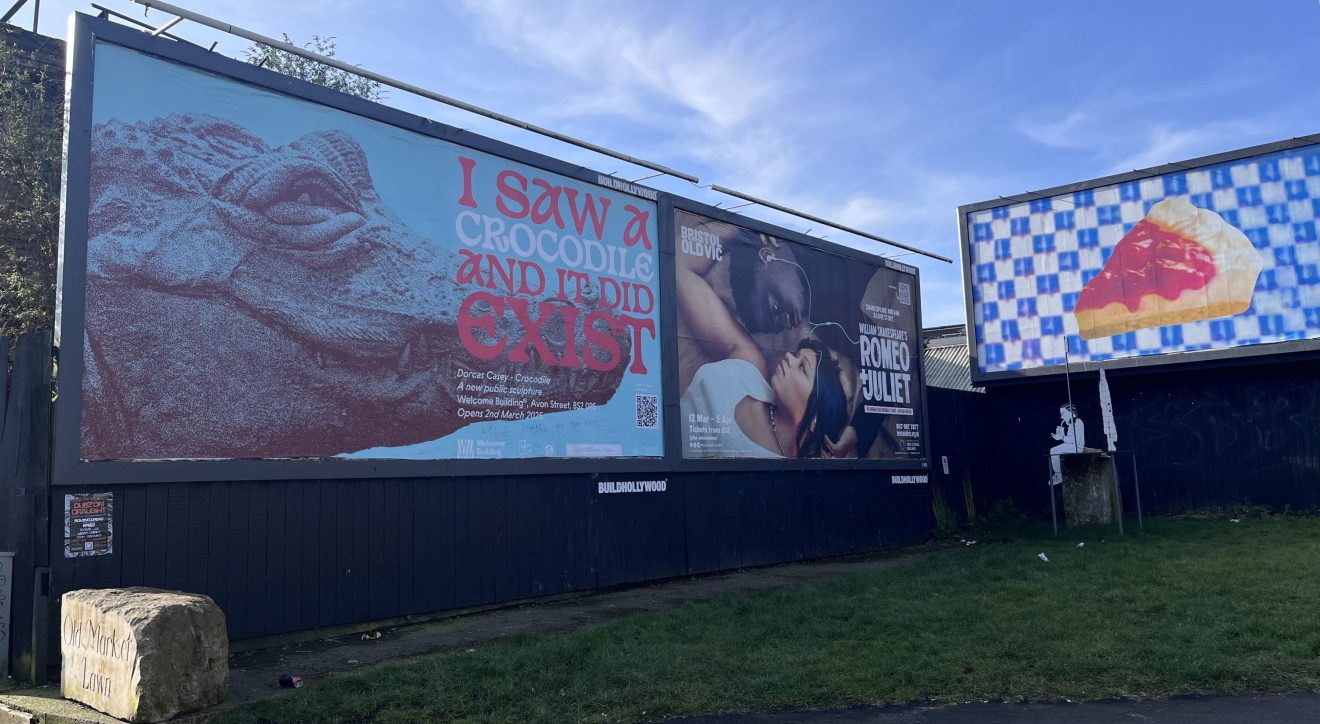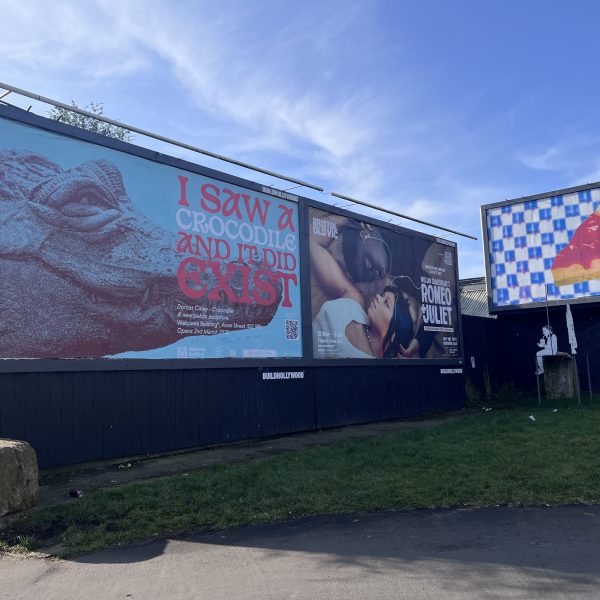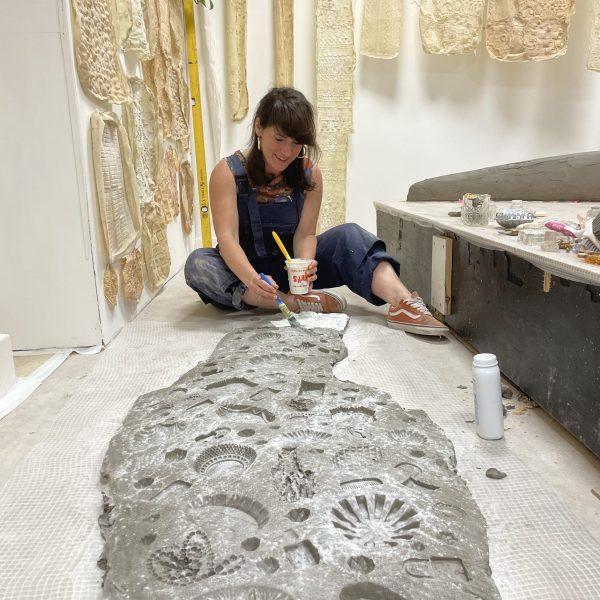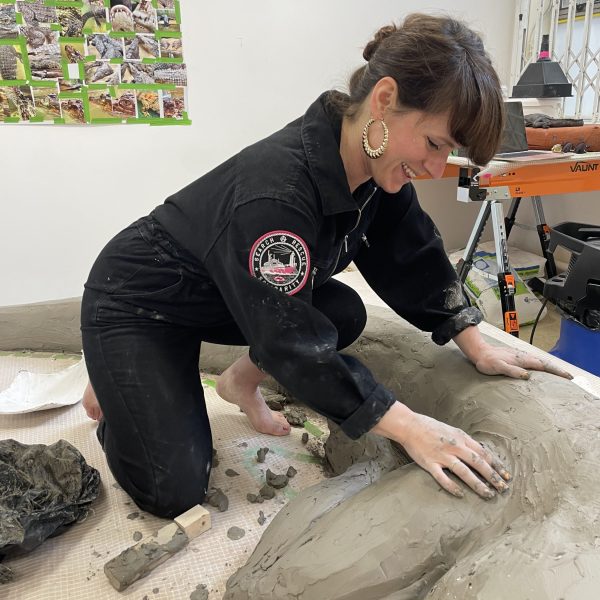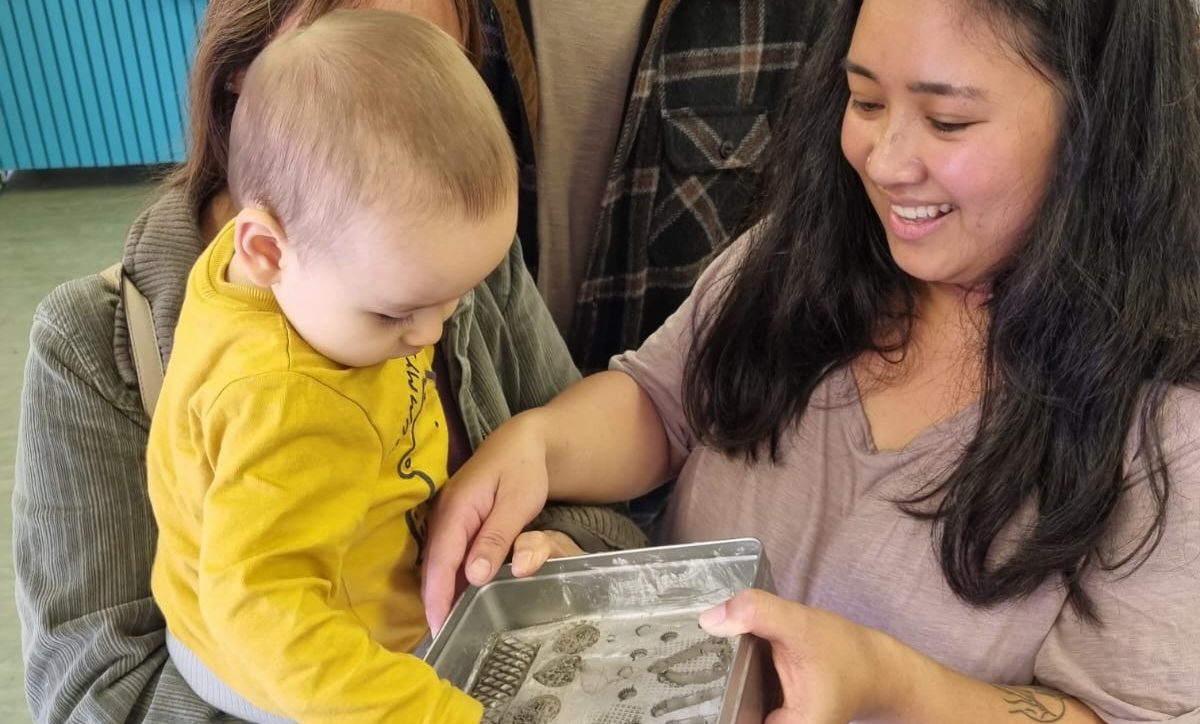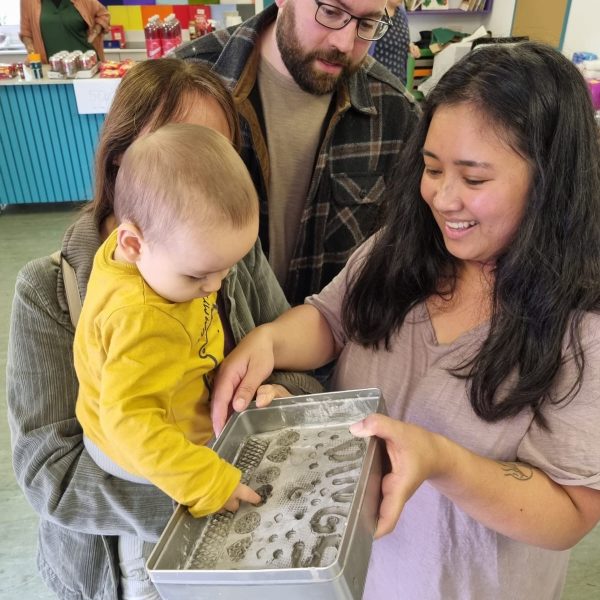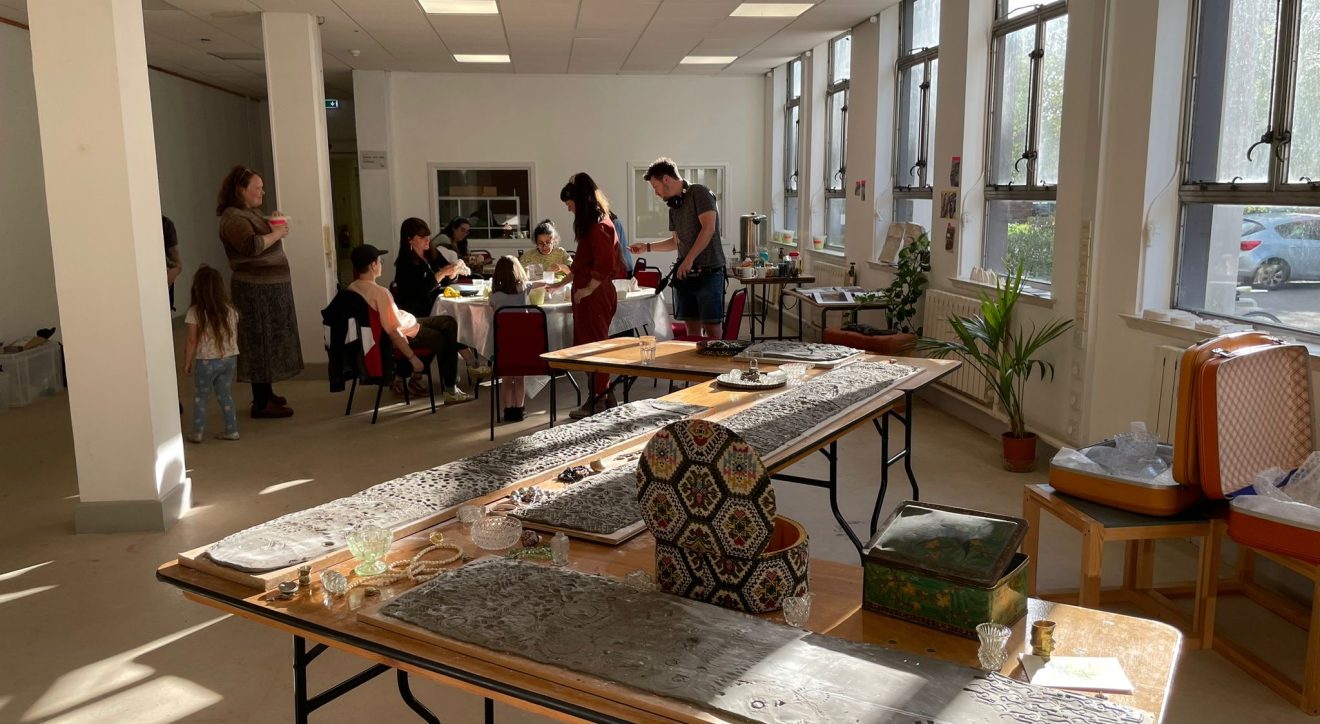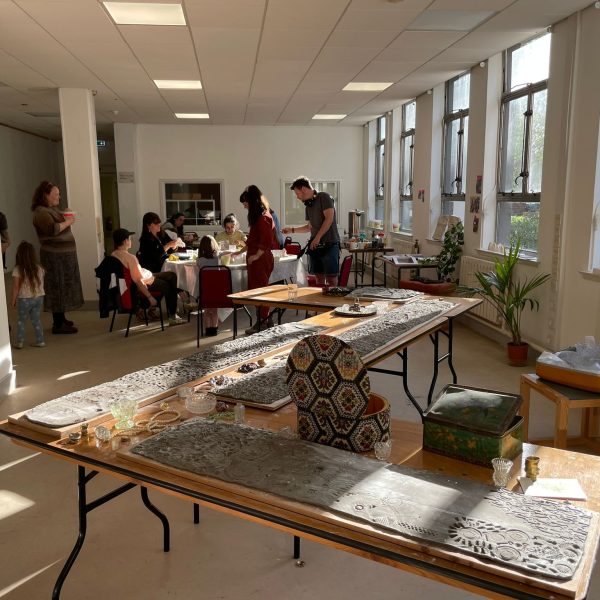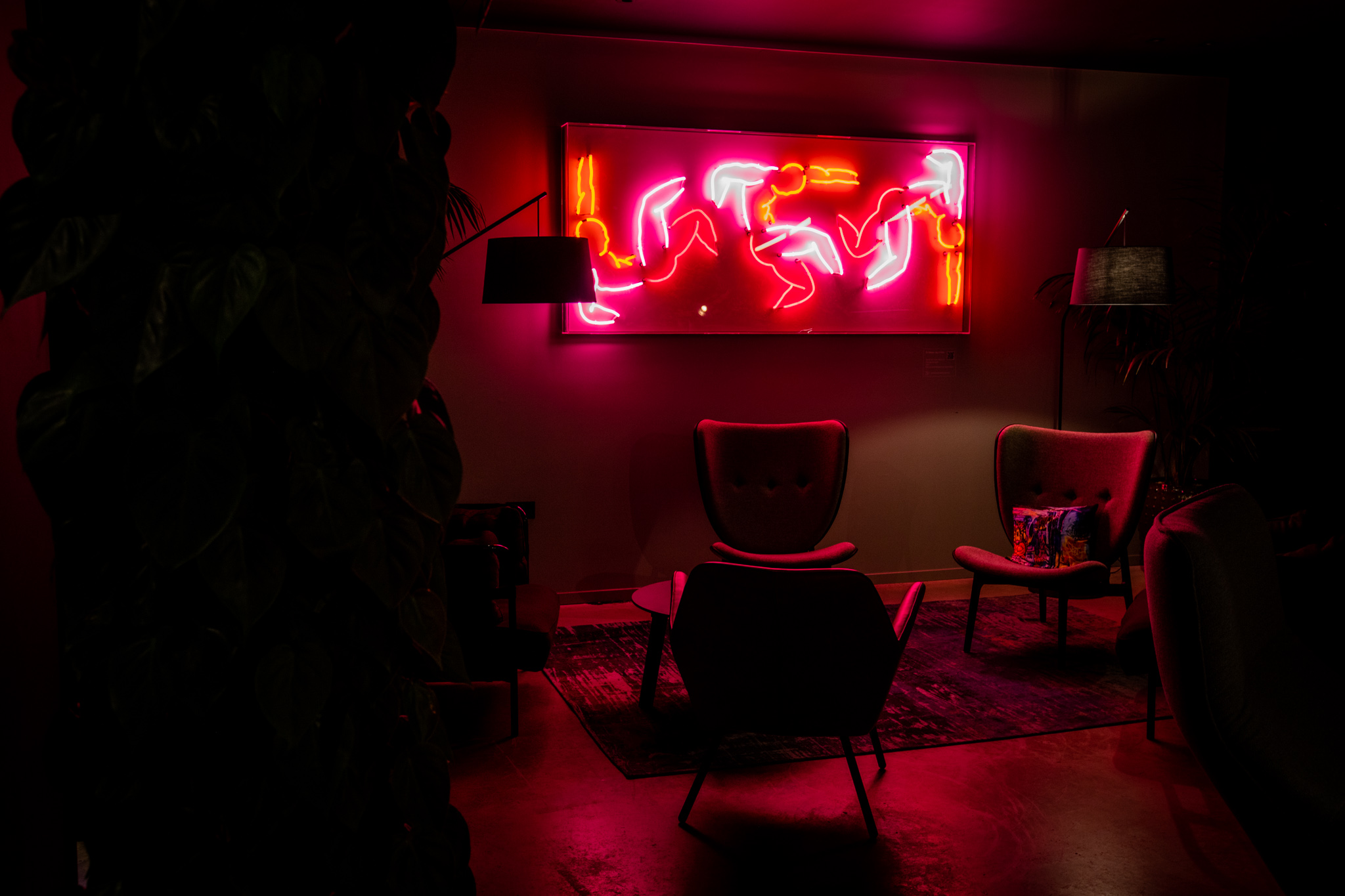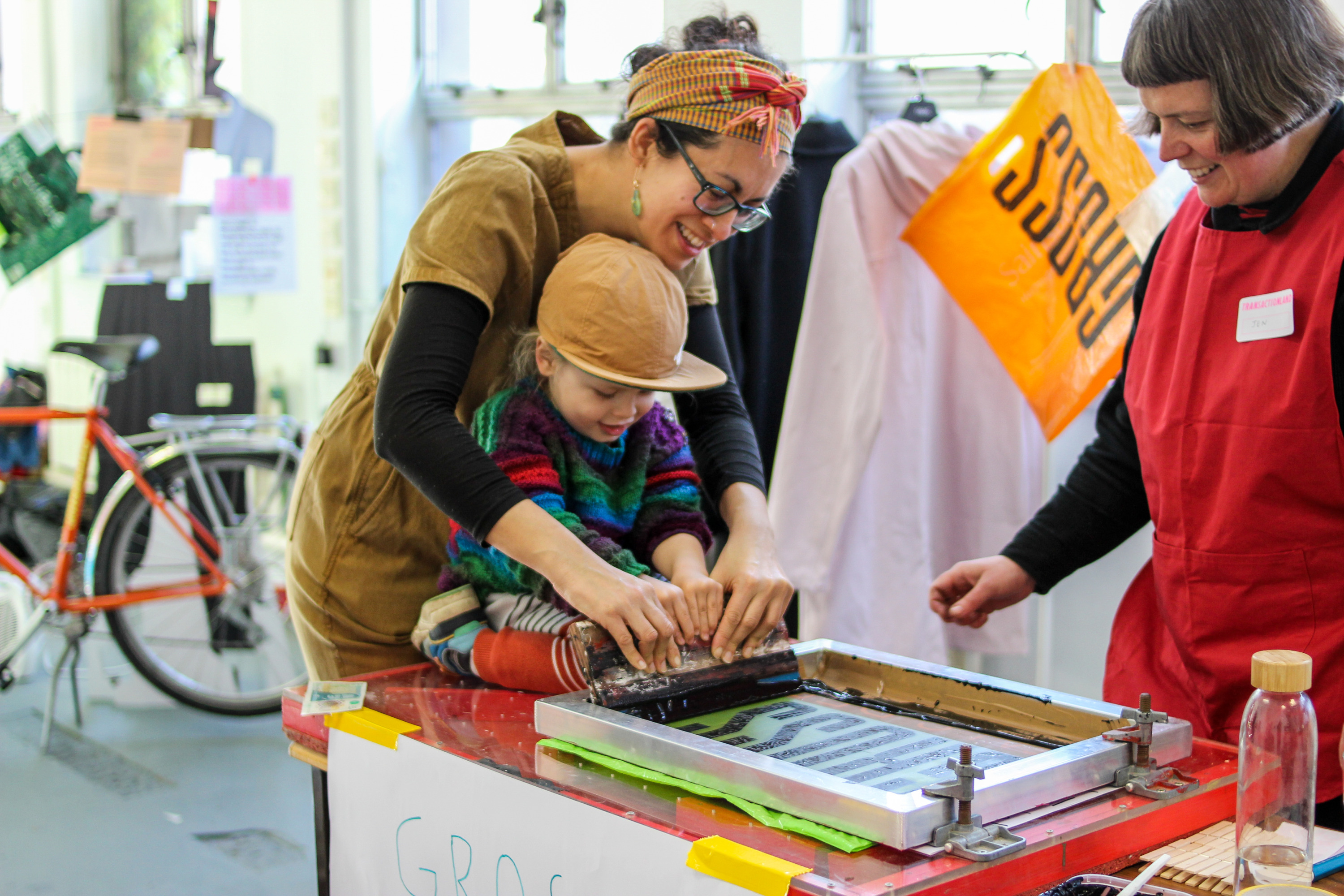
Synopsis
“I saw a crocodile and it did exist.” Jolyon Rea, Bristol Bus Driver, 2014.
Bristol based artist Dorcas Casey’s starting point for this project was a contemporary Bristol myth; the story of the crocodile sighted in the river Avon. This story chimes with her practice, as she is fascinated by the symbolism of crocodiles and the unique place they hold in the human imagination.
For Casey, this story represents Bristolian playfulness, humour and an appetite for mysteries. However, hidden beneath the ridicule are underlying contemporary fears of rising temperatures and climate change, buried still deeper are more primal fears of predators lurking below. There is both humour and depth, poignancy and absurdity in this modern-day folk tale of the Bristol crocodile.
For this commission, Dorcas drew inspiration from the ancient marshes and waterways of Temple Quarter, the rich history of glassmaking, and the vibrant folklore of present-day Bristol. She envisioned something truly playful and visually captivating—an artwork that would spark curiosity, ignite the imagination, and invite people in.
Driven by a desire to connect with the local community, Dorcas set out to create a stunning new family of sculptures for the Welcome Building. At the heart of this vision was a magnificent, life-sized crocodile resting at the entrance—a creature both awe-inspiring and welcoming. Designed to be fully publicly tactile, its textured skin would be crafted from materials shaped in community workshops, making it not just a sculpture, but a shared creation—a symbol of memories, storytelling, history, and collective artistry.
“Crocodiles are ancient symbols of resilience and regeneration, creatures that reside at the margins of the unknown, serving as a connection between our present and the deep past. It’s no wonder that stories about crocodiles still capture our imagination.”Dorcas Casey, Artist
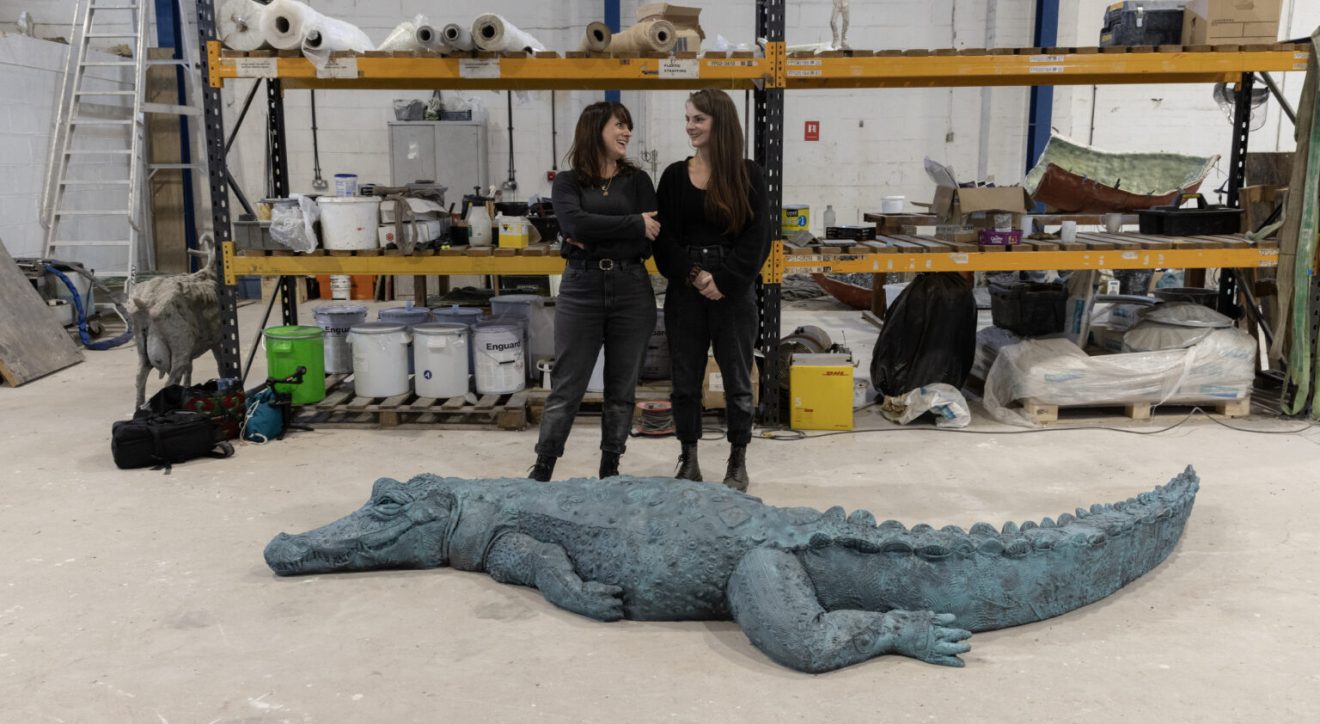
“Dorcas has created something really special for Bristol, and a new landmark for Temple Quarter. Themes of creativity, climate change, motherhood, modern myth and folklore manifest and intertwine in the artwork which presents as a surprising and intriguing addition to Bristol’s public realm. It’s been great to see an artist run with this opportunity so fully and deeply, creating opportunities for local communities to contribute their mark in making something that is greater than the sum of its parts, and takes on a life of its own.”Jack Gibbon, CEO Bricks Bristol
Description
Process of Making:
For this commission, Casey drew inspiration from the ancient marshes and waterways of Temple Quarter, the rich history of glassmaking, and the vibrant folklore of present-day Bristol. She envisioned something truly playful and visually captivating—an artwork that would spark curiosity, ignite the imagination, and invite people in.
To begin with, the mother crocodile was scaled up from the original small maquette. A full-scale template was made as a guide for the shape of the sculpture construction and then the shape was constructed using an armature and hand finished with 600kg (94 stones!) of clay.
Community Collaboration: Through playful creative workshops with the local community, Casey collaboratively made a palette of textures for the skin of the crocodiles.
Casey worked with nearly 100 local people through youth groups, after school clubs, meet-up groups, community associations and the wider public to create the crocodiles’ skin by pressing objects like jewellery from their loved ones, cut glass objects, special mementos and even fingers and paws into clay.
This created a surface riddled with recognisable textures, impressions and marks personal to the maker.
Casting impressions from clay moulds with liquid latex Dorcas and Octavia Casey painted layers of liquid latex onto the clay impressions made by the community. When this dried it became a flexible skin covered in texture.
Stitching together flexible skin covering onto crocodile form, with cast plaster and polymorph details Casey used these textured latex panels like a fabric. She cut and hand-stitched them together to form the skin of the crocodile. She used polymorph, clay and plaster to craft the eyes, teeth and spiny details.
Silicon mould making of whole crocodile by Castle Fine Arts A pink silicone mould was taken of the crocodile by mould-making specialists from Castle Fine Art Foundry. This mould captured every detail of the skin, the stitching and the clay impressions.
Cast from mould into bronze resin A bronze-resin cast was made in this mould, then pigmented and finished by hand.
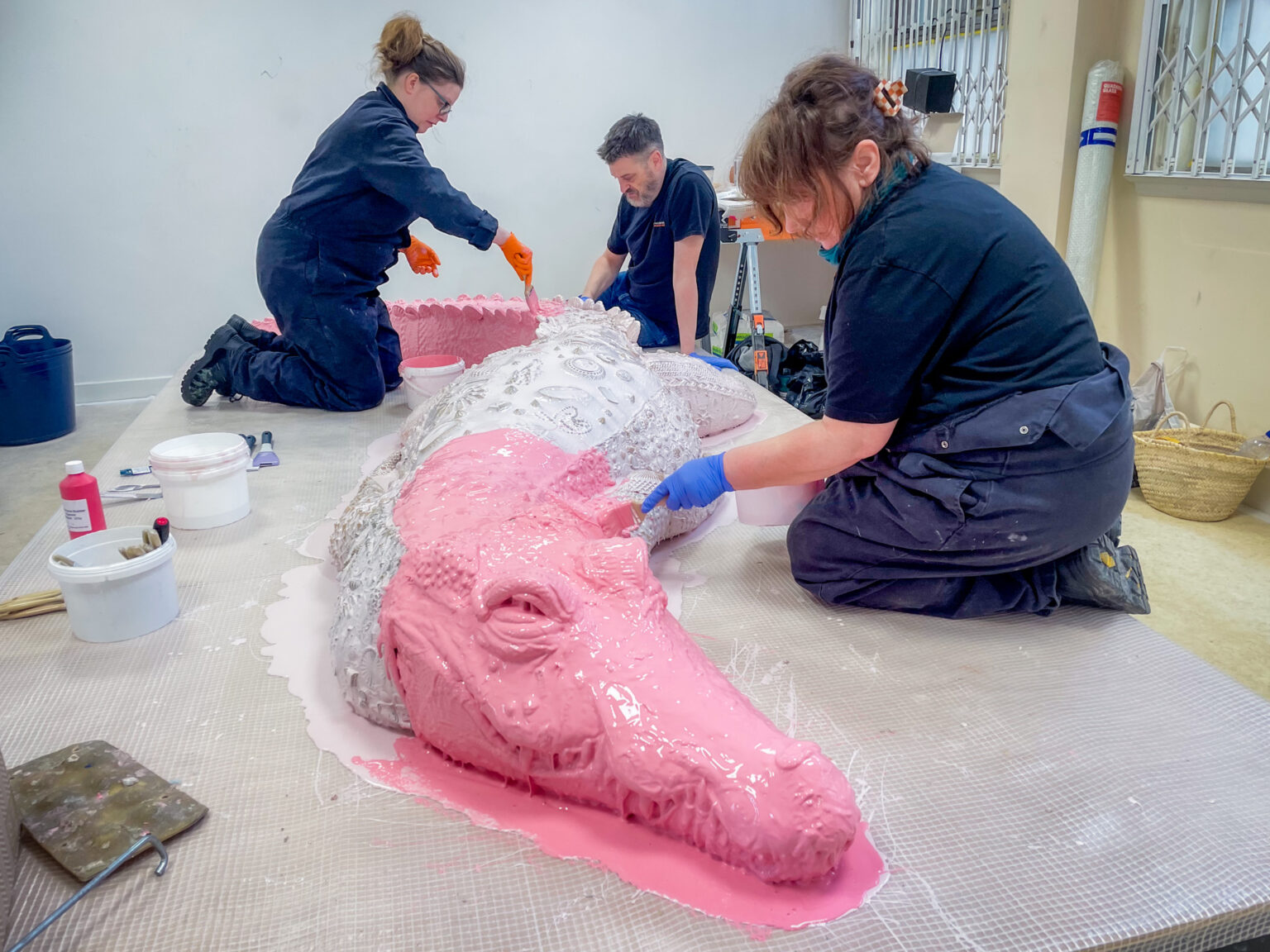

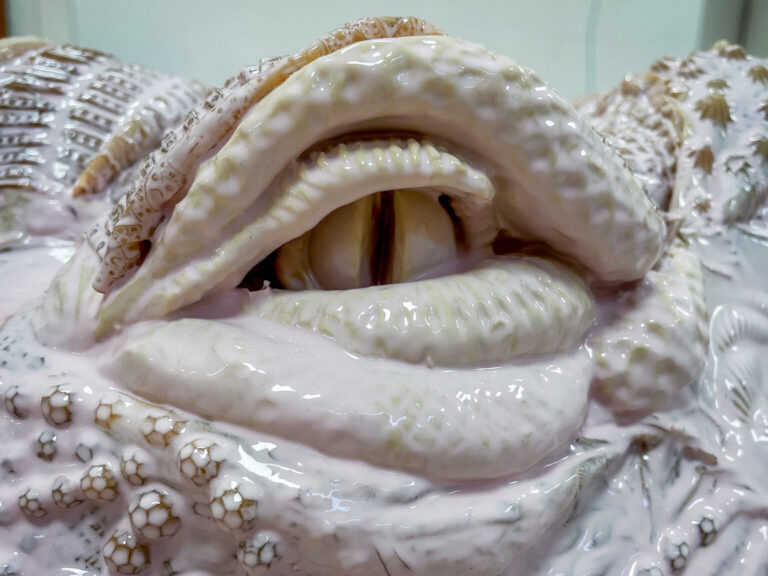
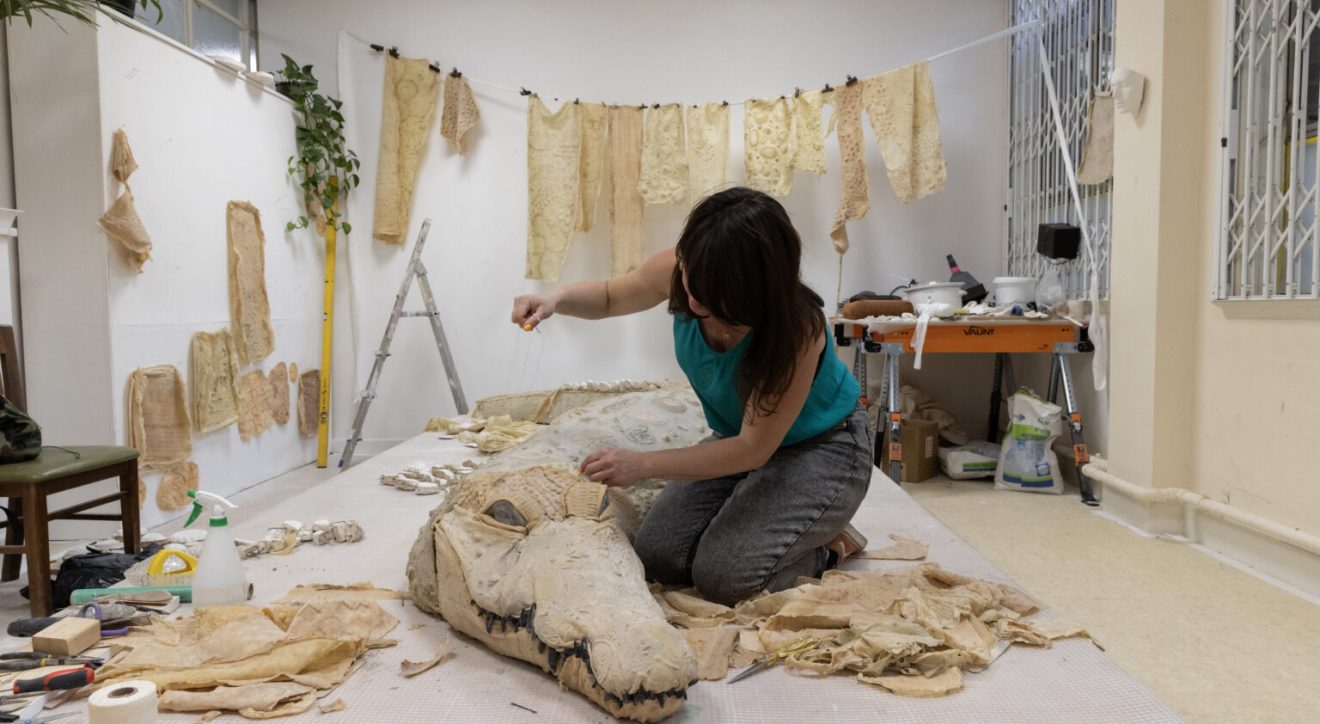
“This has helped create a small but important link between local residents and the Welcome Building. I know many people are looking forward to spotting ‘their’ skin when the crocodiles are in their new home.”Nola Hersey, Chair of the Dings Community Association


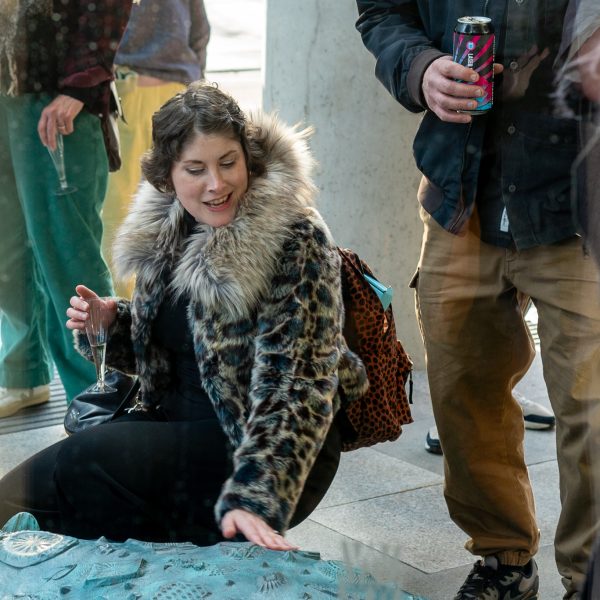
Further Reading
Dorcas Casey is a multi-disciplinary artist based in Bristol. She is interested in dreams, intuition, folk rituals, memory and stories. She works with many different materials including fabric, plaster, bronze, and ceramics.
Dorcas studied Sculpture at Winchester School of Art, including a semester at the University of Seville, and completed a Masters in Multidisciplinary Printmaking at UWE. She is an Academician at the RWA and has a studio in Jamaica Street Studios in Stokes Croft.
She makes processions and sculptures for Glastonbury Festival and exhibited her fabric sculptures at Banksy’s Dismaland.
She was nominated to work as a lead artist for Artichoke’s PROCESSIONS in 2018 and awarded a QEST Scholarship to study bronze-casting. Dorcas won the ACS Studio Prize in 2021 and in 2023 she was resident artist at Guldagergaard International Ceramics Research Centre in Denmark supported by the British Ceramics Biennial.
In 2024 Dorcas was shortlisted for the John Ruskin Prize, she exhibited her work in FAUNA at the RWA, and her horse costumes appeared on the Pyramid stage at Glastonbury Festival.
Bricks are a Bristol-based charity working with creative, local and social enterprise communities in and around the South West. They produce public artwork programmes, deliver creative collaborative activities and secure permanent spaces in the city to build sustainable futures.
Bricks believe in the civic role of artists and that through collaboration we can support communities to build mutually supportive resilience.
Where is the artwork?
Dorcas Casey’s Crocodile launched on March 1st 2025 and is located at permanently at the Welcome Building in Temple Quarter.
Welcome Building, 4 Glass Wharf, Temple Quarter, Bristol, BS2 0PS
Welcome Building® is situated at 4 Glass Wharf, Bristol, in the Temple Quarter Enterprise Zone. It is near the historic Temple Meads train station, the Floating Harbour, significant (and relatively new) commercial buildings at 2 and 3 Glass Wharf, and backs onto the residential neighbourhoods of St Philips and The Dings. It is also located near a range of small independent businesses, which are located in the railway arches on Oxford St.

